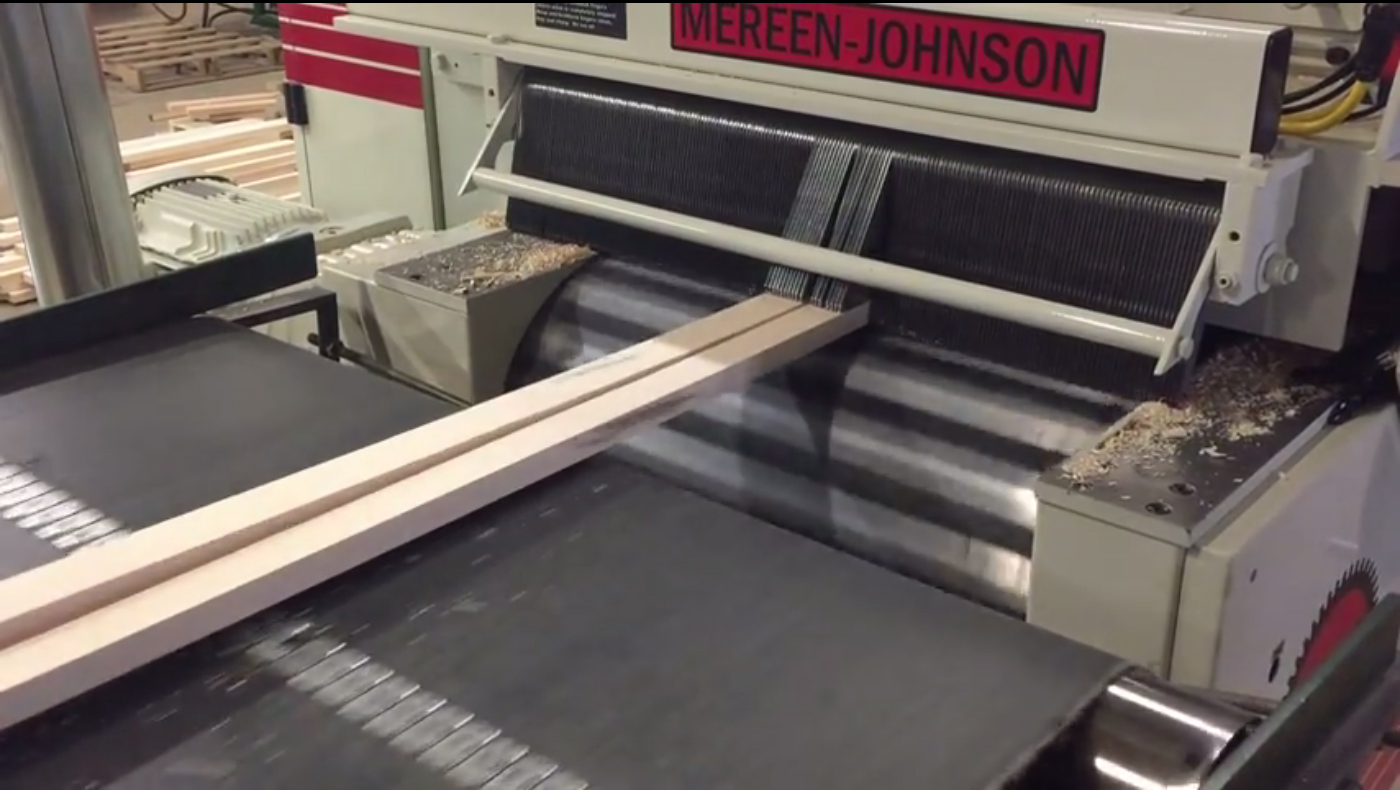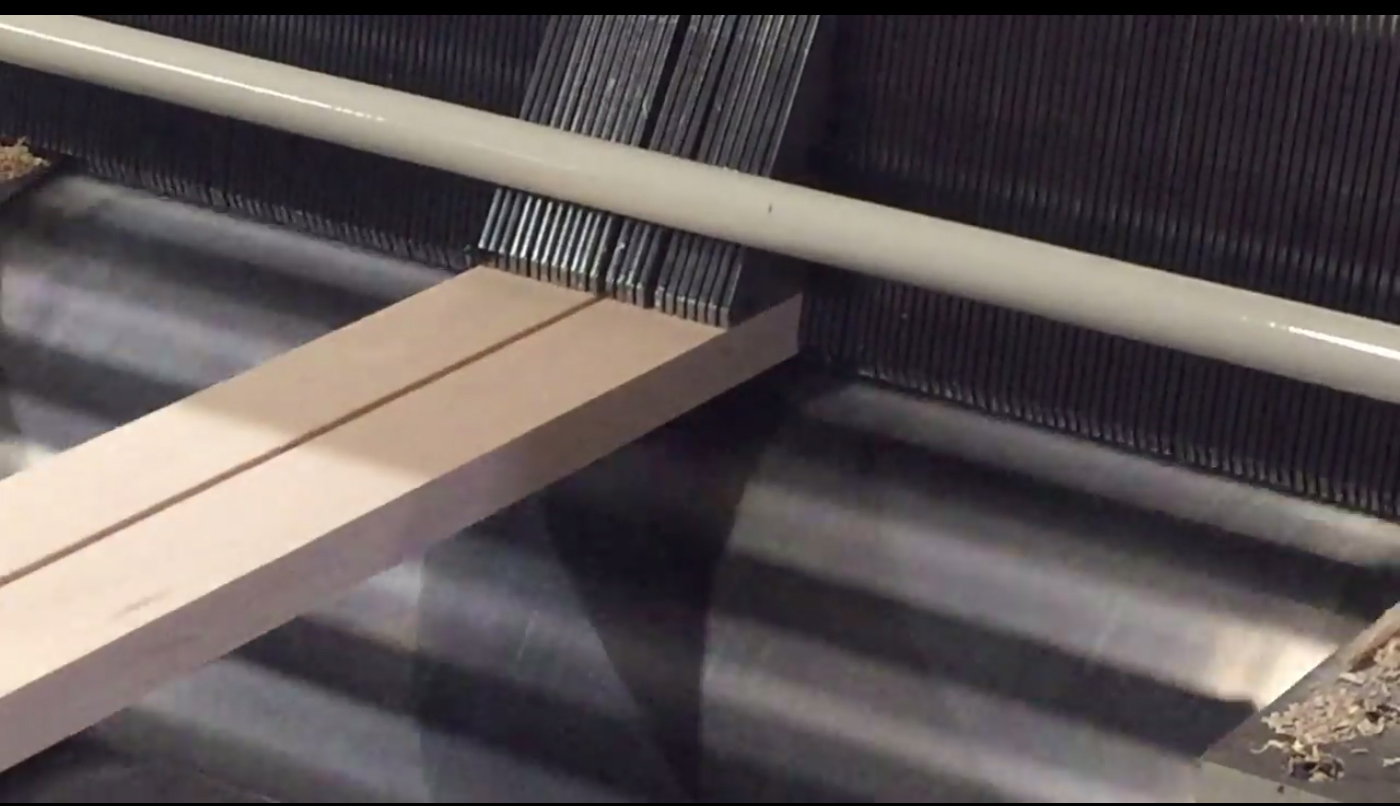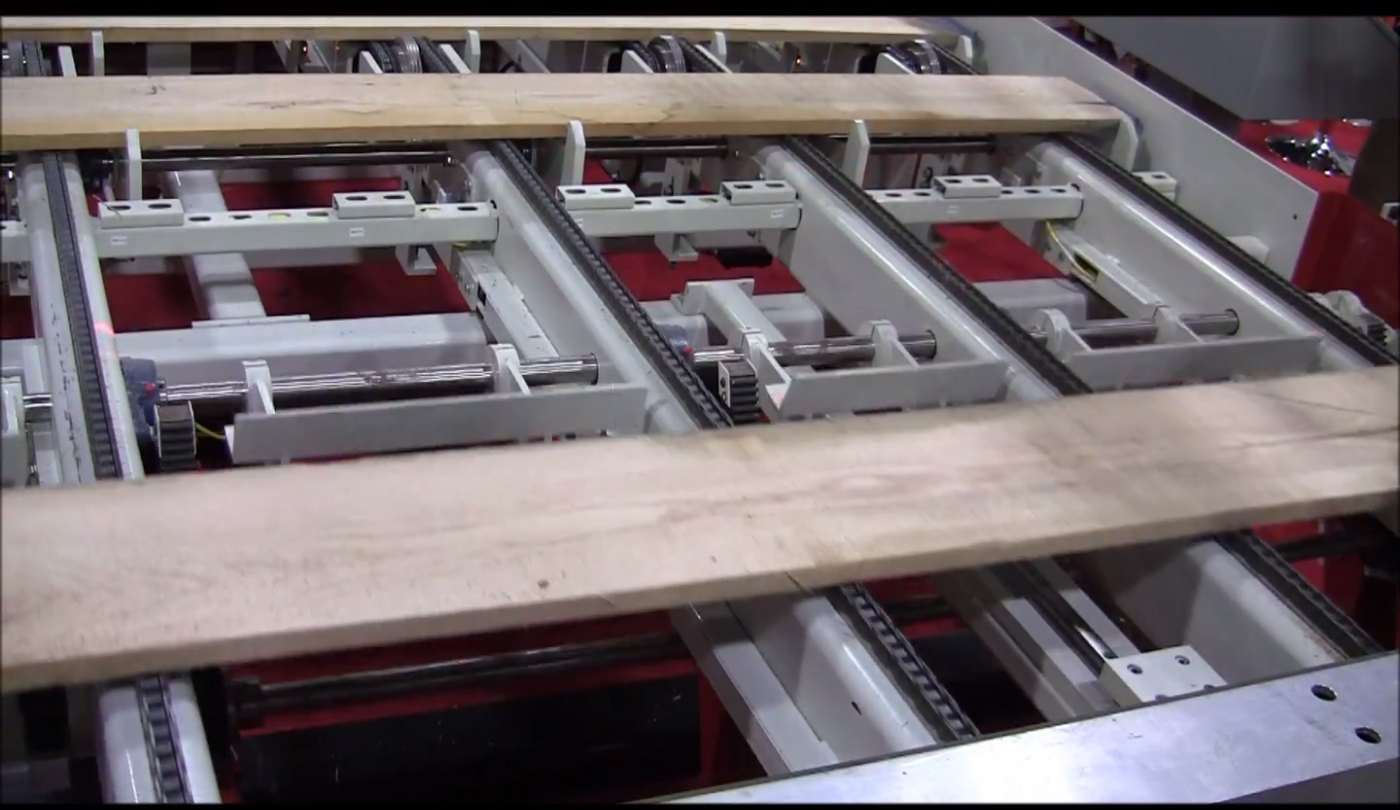Improving yields and efficiency in the rough mill can add meaningful dollars to the company’s finances. If you are purchasing $1 million dollars of lumber a year, then each 1 percent of yield gain adds $10,000 to the company’s bottom line.
Today’s wood product manufacturers are seeing an improving business environment for their products.
Housing starts are trending upward and with that the need for hardwood flooring, cabinets, moldings and other wood products have been rising. The price of hardwood lumber has seen an increase as demand has risen.
The other factor in today’s world is the shortage of labor. With the movement for raising the minimum wage to $15 dollars an hour, the cost for each employee will be increasing. Companies need to look at ways of eliminating unnecessary handling of material and getting more efficient with the people they already have.

Single vs. gang ripsaws
While single blade straightline ripsaws provide great versatility in choosing what parts can be ripped from a random width board, they can be very labor intensive. When production demands outgrow a single straightline ripsaw the manufacturer has two options: add another straightline ripsaw or upgrade to a gang ripsaw.
Companies that manufacture products with limited sizes can be very efficient with a gang saw. The wider the gang saw the more width size combinations that can be put on the arbor, which will produce better yield. The gang saw also will produce better rip width accuracy and parallelism, allowing for cutting your parts with a narrower moulding allowance than a straightline ripsaw. Higher production capability is also a primary advantage of the gang ripsaw, which is typically 3-4 times more productive than a single blade ripsaw.
However, if your shop requires the production of many different sized parts or short production runs, you may not be able to get all the width combinations needed for the best yield with a fixed gang saw that requires a lot of arbor changes. In that instance, your company should investigate a ripsaw with moving blades.

A moving blade gang ripsaw has the advantages of being able to produce any size part without the changeover time, resulting in savings for the company. For example, fixed gang saw can require up to 20 minutes changeover time, which, if this happens 5-6 times a day, is about two hours of run time per day.
Moving blade gang ripsaws come in many different configurations and sizes. Typical configurations are 12-, 18- or 24-inch wide saws with 1 to 6 moving blades. You should look at how many rips typically will come out of the saw to determine how many moving blades are required. The smaller the part sizes, typically the more moving blades you will require to cut the most optimal solution out of each board. Check with the machinery manufacturer to determine the smallest net rip the saw is capable of producing. Some combination of moving and fixed blades should also be considered depending on your cut bill.
A moving blade ripsaw can increase your yield from a fixed gang saw from 1-5 percent or more depending on your part sizes. If your product allows the addition of random width parts to your cut bill, substantial increases in yield will be seen over a fixed arbor saw. You may also be able to buy a lower grade material, saving money while still improving your yield by using the moving blade ripsaw to cut around the defects. Simulations can be done with your cut bill to determine what is the best ripsaw and what yield increase you can expect.

Material handling & optimization
I am still amazed at the number of operations that manually feed their ripsaws. Some have lasers for referencing the positions of the saw blades or marks on the machine to give the operator a visualization of where to feed the board. This method is slow and takes an experienced operator to get the best yield from each board.
An optimizing infeed for the gang ripsaw can help increase production through the saw and also increase the yield. Optimizing infeeds use either a photo eye array or cameras to measure the board for width, length and side bend. They then use that information to position the fence, and the moving blades if so equipped, for the best yield for that cut bill and arbor configuration. Most systems also allow you to run in automatic mode, with no operator needed to make cut decisions, eliminating more labor from the operation. Some camera systems will also see defects in the lumber and use that information to optimize where the board will be cut.
Besides the infeed optimizing conveyor there are other labor-saving systems that can be added to the rough mill. A tilt hoist with an unscrambler or automatic vacuum lift unstacker combined with bunk conveyors can be designed so that the ripsaw has a constant flow of material without waiting for forklifts to bring material to the saw. The vacuum lift has the advantage of a reduced footprint over a traditional tilt hoist system, but both are effective.
Material handling behind the ripsaw is also important for an efficient rough mill layout. By using an outfeed belt conveyor with a pinch roll, material can be transferred from the ripsaw onto a sort chain conveyor. This allows workers to sort the rip strips into carts to facilitate transfer to the next operation. If edgings are left on the conveyor they can be transported to the end of the sort chain and dropped into a conveyor to the grinder or hog for disposal.
Every rough mill is different because of the constraints of the building and the space allocated for the operation. Wood products manufacturers should ask their vendors for help laying out an efficient design plan for their rough mill. And don’t be afraid to look at new technology as the wood industry can’t afford to ignore new ways of making its business more efficient. The next generation won’t be able to compete if they must spend several years simply catching up to the rest of the field.
Source: John Branch is the vice president of sales for Mereen-Johnson LLC. For information call 888-4MJSaws or visit Mereen-Johnson.com.






Have something to say? Share your thoughts with us in the comments below.